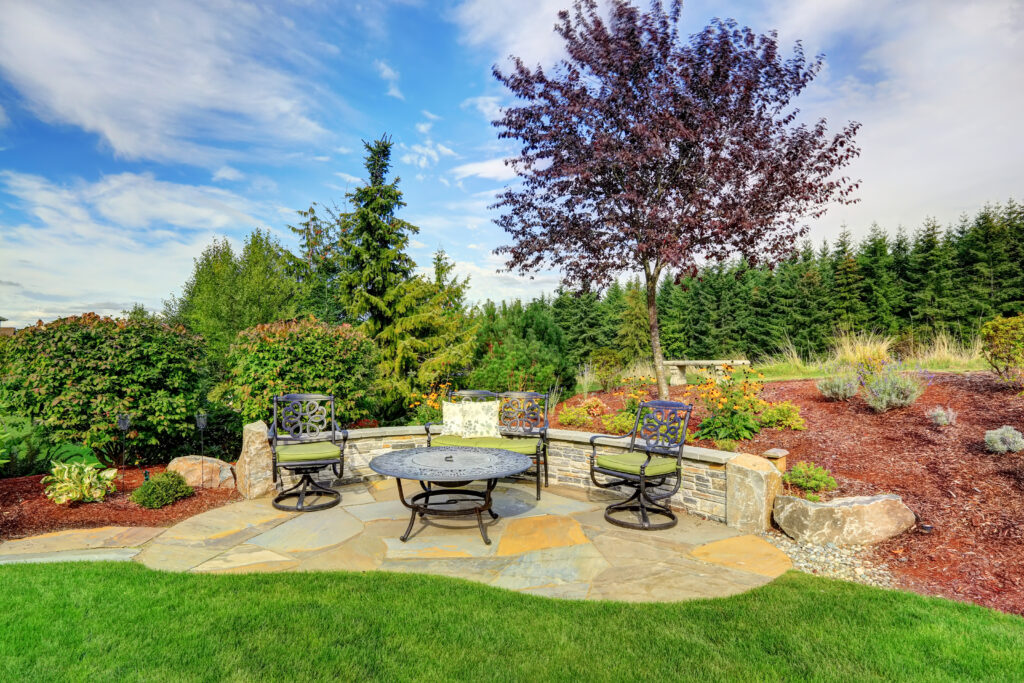Trees are essential not only for our natural environment and eco-system, but also for enjoyment. Trees provide shade, privacy, wind-screening, ambiance, and protection.
Trees can also be planted to hide unpleasant areas, utilities, or undesirable views.
Plus, trees offer many benefits to us and to local wildlife.
What trees are best to plant in Missouri?
Like all plants, trees need consideration before planting. Size, soil type, sun light, and water should all be taken into account before planting. We’ve seen far too many trees planted in less-than-ideal places, often resulting in problems.
The great thing about trees is the abundance of diversity available – especially native trees and evergreens in Missouri. Next time you plant a tree, consider some of our top performing trees listed here. And, stay far away from the worst trees!

Best Trees to Plant in Missouri
Pawpaw Trees
Pawpaw trees top our list as an “underdog” tree, because they are a smaller tree that attracts butterflies. In fact, the caterpillars of the Native Zebra Swallowtail butterfly only feed on native Pawpaw trees, making them essential to our natural eco-system. Pawpaw trees also produces a delicious edible fruit that can be eaten as is, or used to make pudding, custard, or pies.
Who wouldn’t want that in their backyard?!
Oak Trees
Oak trees are amazing because of the number of pollinators they support. They top the list at an estimated 557 butterflies and moth caterpillars supported with just one tree. If you are planting to support and sustain our environment, you’ll want to plant in Oak tree.
Other trees that support an abundance of wildlife include Black cherry, Willow, Birch, Poplar, Crabapple and Walnut.
Serviceberry Trees
Another edible, native tree with stunning beauty! Serviceberry trees feature gorgeous white flowers that blossom in spring, followed by berries that both birds and people can enjoy. The fruit first turns green then a deep purple, signaling when they are ripe and ready to pick. Try a few delicious berries in a fruit parfait or salad and leave a few for the birds to enjoy.
Serviceberries make for an excellent alternative to some of the WORST trees to plant – Bradford Pear & Callery Pear trees.
Eastern Redbud Trees
Need to add some interest to your landscape? Try planting an Eastern Redbud! These native trees feature gorgeous purple flowers that bloom around March-April in the St. Louis area.
Redbuds provide a springtime nectar sources for bees and the seeds are eaten by many types of birds.
Worst Trees to Plant in Missouri
Bradford Pear Trees
These flowering trees became popular for planting because of their fast growth and eye-catching spring flowers. However, they do more harm than good. These trees crowd out our native plants and don’t perform well in Missouri.
Callery Pear Tree
Callery Pears were planted for the same reasons as the Bradford Pear; for the showy, spring flower show. They have the same negative impacts on our local environment and should be avoided for any new tree plantings in your landscape.
Invasive Bamboo
While not a tree, bamboo shouldn’t be planted directly into the ground anywhere in Missouri, unless very specific control measures are in place. Bamboo grows quickly, and is almost impossible to eradicate. It spreads rapidly and unless it’s controlled from the beginning, will spread aggressively into areas that it was not intended to be in. Some St. Louis neighborhoods are even adding invasive bamboo to a no-plant list.
Any tree can become problematic if planted in the wrong place. It’s important to balance placement, size, and aesthetic of a tree. Tree nurseries can be a great source of knowledge in tree selection.
Tree experts can help guide you on your decision for tree planting. From large, estate trees to smaller understory trees, there are many beneficial trees out there that would grow happily in your yard.
If you’ve just planted a new tree in your yard, you can see our tips for newly planted tree care here. Proper care is important for any new plantings.


